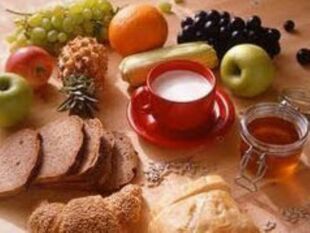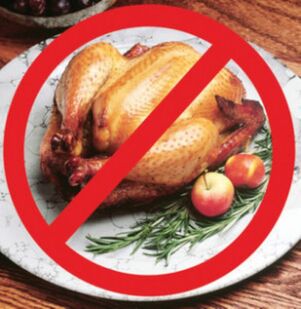Pancreatitis is a long-term and complex pancreatic disease with a variety of causes. One of them: a sharp violation of the norms of consumption of fatty foods, overeating, alcoholism. Adherence to special dietary rules for pancreatitis is half the success in treatment.
The diet for pancreatitis is designed to replace and supplement the menu with poorly processed ingredients due to lack of pancreatic enzymes.
Some patients are of the opinion that dietary therapy for pancreatitis is no different from diet 5a and continue to follow its recommendations. This is understandable because most individuals initially receive long-term treatment for cholecystitis, gallstone disease, or hepatitis. They understand tables 5a and 5, which set the nutritional standards needed for the disease.
But if pancreatitis is detected, diet 5a should be changed. Changes that occur when the pancreas is damaged require correction of protein, fat and carbohydrate content. The diet for patients with pancreatitis is called "5p". This has increased the protein content to 150 g (in No. 5 100-120 g), reduced the amount of fat (in No. 5 at least 70 g) and carbohydrates (in No. 5 at least 300 g). Cooking rules and restricting food choices remain common.
Basic requirements for diet
The proposed diet regulation # 5p does not exclude the use of diseases equivalent to the digestive system. They are important to realize maximum loading of the pancreas.

- Cook food only boiled, stewed, baked or steamed. The frying method is strictly prohibited.
- Note the avoidance of damaged organs by grinding all the plates during the most acute stage of the disease.
- A moderate temperature is required (no sharp fluctuations from cold to hot).
- It is necessary to feed the patient with a little food, but after every 3-4 hours.
- Avoid eating too much at one time, overeating even on a diet.
- Maintain a daily calorie intake of at least 3000 kcal.
The recommended diet schedule according to Povzner takes into account the options for the worsening period and beyond, when the pain has disappeared, but maintaining and continuing proper nutrition in pancreatitis is very important.
5 p diet options to worsen pancreatitis
Clinical manifestations of acute and chronic pancreatitis at the exacerbation stage (sharp pain, vomiting, nausea, diarrhea) do not allow patients to eat in the normal way. The treatment regimen requires complete fasting for two to four days. You also should not drink; in the first few days, the fluid is injected intravenously.
After stopping vomiting and pain, an initial 5p diet is prescribed. The goal is to reduce the formation of gastric acid and allow the pancreas to concentrate all its strength on the process of struggle to survive.
Diet can be used no more than two weeks, because the composition is unbalanced (protein is reduced to 60 g, fat to 50 g, carbohydrates up to 200-280 g, with a total caloric content of 1800 kcal). Of course, bed rest and lack of physical activity are recommended.
The diet menu of patients with pancreatitis consists of mashed cereal soup, cereal grains in water (excluding semolina and rice), mashed vegetables or carrots with the addition of zucchini, boiled pumpkin (cabbage in all forms not included), jelly, jelly, pudding, some white crackers. All served and cooked without oil. You can drink up to 2 liters of water, rosehip broth, a little sweet tea. After this option, on the recommendation of the doctor, they switch to the second type of food.
Diet without exacerbating pancreatitis
The beginning of an effective recovery process is assessed by normalization of temperature, decreased frequency of diarrhea, and absence of pain. Food for pancreatitis develops, but the norm of maximum protein, fat and carbohydrates is observed. You need to include vitamins in your therapeutic diet to activate the body's defenses. Patients must adhere to this diet for life.
Diet for pancreatitis is strictly prohibited:

- fatty meat, fish and vegetarian rich soups (with cabbage or mushrooms);
- fatty beef and pork, duck;
- lard and cooking oil;
- smoked meats, snacks, sauces, canned foods in any form, sausages;
- rich pastries, cooking creams, chocolates, pies, black bread;
- from diet vegetables for pancreatitis does not recommend carrots, cabbage, carrots, reddish, spinach;
- carbonated drinks, beer, alcohol, coffee.
Recommended products and foods:
- dry white bread or crackers, dry biscuits;
- steamed, grilled, lean meats, meatballs, meatballs and meat casserole dishes;
- soup from cereals, with noodles, you can season with sour cream;
- non-acidic cottage cheese, hard cheese varieties;
- butter or vegetable oil should be added directly to the plate, no more than one tablespoon a day;
- semi-liquid porridge, boiled in water or liquid milk;
- baked apples without sugar, jelly or fruit compote;
- lightly brewed tea with milk or rose hips in broth, slightly sweet.
Diet for pancreatitis in remission recommends the following sample menu for people working for the day:
- Breakfast before work - you can make a vapor protein omelet from two eggs or half a portion of oatmeal in milk, tea with milk.
- Breakfast # 2 (at lunch) - take boiled meat with mashed potatoes or vegetables, half a pack of cottage cheese, if at work there is an opportunity to heat it in the microwave, be sure to use it.
- Sweet tea.
- Lunch (at home after work) - half a plate of vegetarian potato soup, steamed meatballs with vegetable puree, apple jelly on xylitol.
- Dinner - a piece of boiled chicken, cottage cheese casserole, tea with milk.
- At night (at least 21 hours) fruit jelly on xylitol.
You can take unused vegetables and fruits, as well as increase the diet only with the consent of the doctor, after undergoing an examination to ensure that the enzymatic activity of the pancreas is restored and there is no inflammation.































































